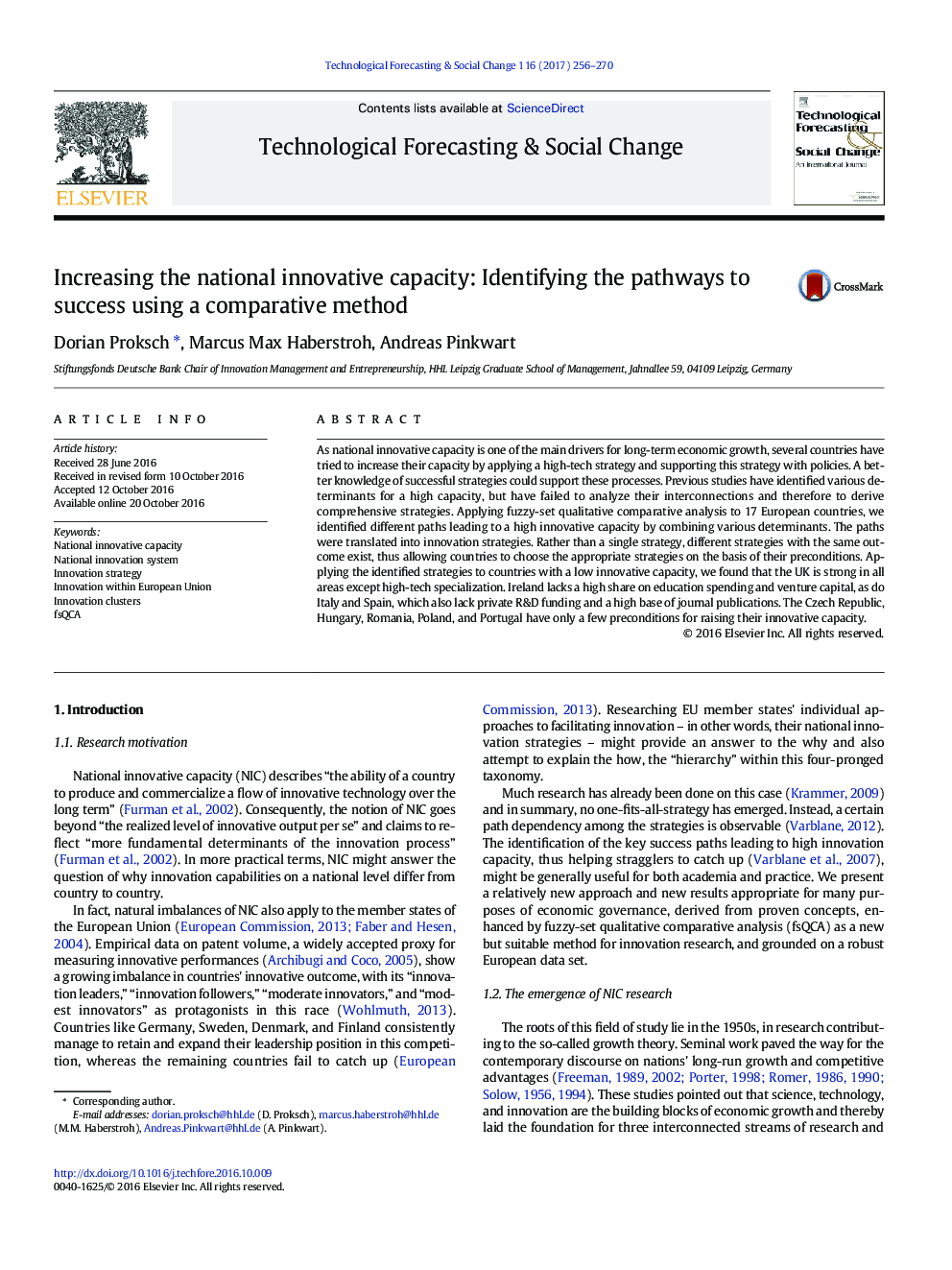| Article ID | Journal | Published Year | Pages | File Type |
|---|---|---|---|---|
| 5037014 | Technological Forecasting and Social Change | 2017 | 15 Pages |
â¢Analysis of holistic strategies is preferable to focusing on single determinants.â¢Different strategies can produce the same outcome.â¢Countries can select a strategy that is based on a strength they already have.â¢Recommendations are provided for achieving improvement on a country level.â¢This study is among the first to apply a comparative method in this research stream.
As national innovative capacity is one of the main drivers for long-term economic growth, several countries have tried to increase their capacity by applying a high-tech strategy and supporting this strategy with policies. A better knowledge of successful strategies could support these processes. Previous studies have identified various determinants for a high capacity, but have failed to analyze their interconnections and therefore to derive comprehensive strategies. Applying fuzzy-set qualitative comparative analysis to 17 European countries, we identified different paths leading to a high innovative capacity by combining various determinants. The paths were translated into innovation strategies. Rather than a single strategy, different strategies with the same outcome exist, thus allowing countries to choose the appropriate strategies on the basis of their preconditions. Applying the identified strategies to countries with a low innovative capacity, we found that the UK is strong in all areas except high-tech specialization. Ireland lacks a high share on education spending and venture capital, as do Italy and Spain, which also lack private R&D funding and a high base of journal publications. The Czech Republic, Hungary, Romania, Poland, and Portugal have only a few preconditions for raising their innovative capacity.
